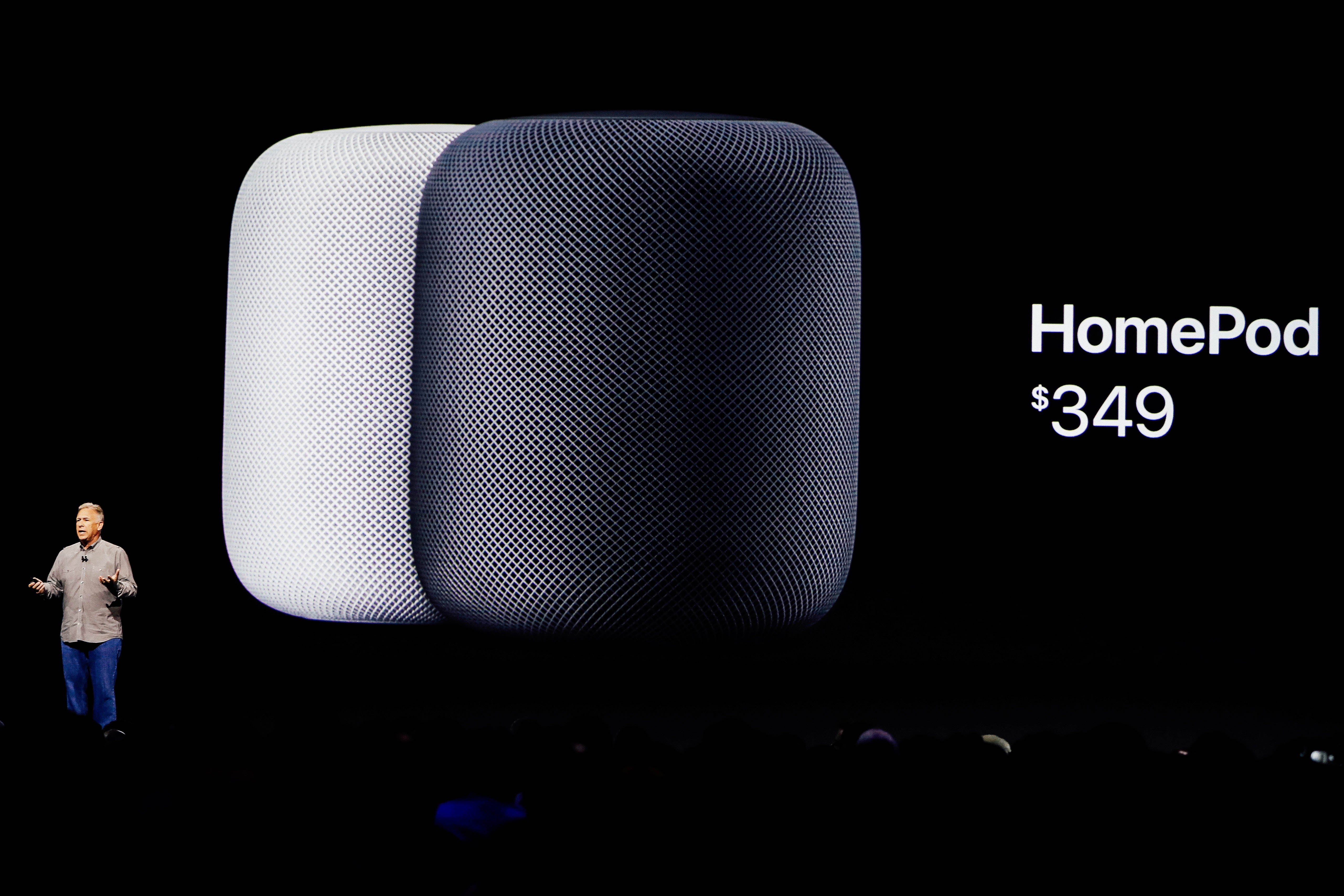Apple’s HomePod smart speaker finally has a launch date. After missing its original December debut, Apple announced Tuesday that the HomePod will begin shipping on Feb. 9, with preorders beginning this Friday.
That means Apple will finally join one of the most popular areas of consumer technology today. It also means that we’ll finally find out how Apple fares against incumbents, such as Amazon and Google, who have had smart speakers available more than a year (and more than three years, in the Echo’s case). Apple is late to the game and will face some significant challenges ahead. But Apple’s also no stranger to being a tardy entrant to a burgeoning technology field. The Mac debuted nearly a decade after the first PCs landed. When the iPod debuted in 2001, it joined a long list of existing MP3 and portable music players. Even more recent product launches, such as the iPhone and Apple Watch, came years after the first entrants hit the market. On top of being able to learn from the struggles of its competitors in these instances, Apple has a large and dedicated fan base willing to wait—or pony up extra cash—for Apple’s take on a consumer tech staple.
But this time around feels different. The smart speakers already available to consumers have excellent reviews—and excellent sales numbers to back that up. While they may have issues from time to time, they don’t suffer from extensive pain points that Apple can swoop in and address. Google and Amazon are two of the biggest tech companies in the world, and compared to the days when Microsoft was Apple’s nemesis, these rivals have learned from Apple’s example over the years. Their products look good, are easy to use, and integrate with their own house-built software. They won’t be easy to beat.
Below are five of the toughest areas Apple is going to have to contend with as its HomePod makes its debut.
It’s an already crowded market.
Amazon and Google, the erstwhile leaders of the space, both offer a multi-product lineup of smart speakers. Google has three products: the $49 Google Home Mini, the $129 Google Home, and the larger $399 Google Home Max. Amazon offers five Echo products ranging in price from $49.99 to $229.99, some with screens and some without, and a growing stable of other Alexa enabled-products, both Amazon-made and offered by third parties. (Google has a growing number of Google Assistant–enabled partner products, too.) And that’s just Google and Amazon—other hardware manufacturers are working on their own smart assistant-enabled speakers, too.
As of the 2017 holiday season, the smart speaker isn’t a niche product category. There are dozens of options available to consumers—and many have already purchased one or more of their own.
Price
Of the existing smart speaker models available, the HomePod will enter as one of the most expensive options, landing at $349. Like the Google Home Max, its most direct competitor, Apple’s speaker commands that price tag because it places a premium on audio quality. It includes not just high-end internal components. It also boasts features like “spatial awareness”—the device will customize its audio characteristics depending on the size of the room it’s in and its positioning within that room. It’s unclear whether Apple users care that much more about audio quality that they’ll pay $350 for a device whose other main features they can get for a fraction of the cost.
Limited music streaming
On Alexa and Google Assistant devices, you can stream music from a number of different sources, including Spotify, iHeartRadio, Pandora, Amazon Music, and Google Play Music. Apple’s HomePod is far more limited: It only streams music purchased from iTunes, Beats 1, and Apple Music, a $9.99 per month subscription. (It can also play podcasts.) However, if you’re not an Apple Music subscriber, you won’t reap the “full music functionality” of the HomePod. For those who prefer another music streaming platform, that’s a huge negative.
A reduced market audience
Part of the reason Amazon and Google succeeded so dramatically in holiday sales was because they slashed prices on their devices, offering their lowest-end models for as cheap as $30 (which made them popular gifts). It’s possible that many smart home–curious households now already own a connected speaker and don’t have a need for an Apple-branded one. However, it’s also possible that the Alexa and Google Assistant–heavy holiday sales spree only targeted people who never planned to purchase Apple’s HomePod anyway, leaving Apple’s target audience largely untapped. The reality of the situation probably lies somewhere between those two extremes, which would mean at least some of Apple’s intended audience ended up with a competitor’s product in the months since HomePod was first announced.
Siri’s chops
Siri can do a lot of things, but somehow, she’s never quite gained the reputation of a “useful” assistant the same way that Alexa and Google Assistant have. According to Wired, she’s fallen behind when it comes to her capabilities and her integrations with third-party apps. HomePod will remedy some of those failings. With the HomePod, consumers will be able to use Siri to control HomeKit-connected devices—you’ll be able to say a command like “Hey Siri, I’m home,” to automatically switch on the lights, control the blinds, adjust the thermostat, or whatever other connected home device preferences you have. You’ll also be able to add reminders, make to-do lists, and even send text messages (something that’s not-so-native to Alexa). But is there anything truly unique, game-changing, or special that Siri will be able to do above her virtual compatriots? We’ll find out soon.
